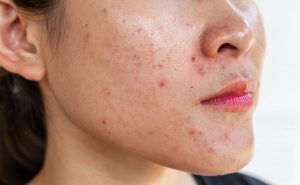Beyonce Knowles’ father first suspected something was wrong when he noticed a dot of blood that kept appearing on his shirts and bedsheets.
“Imagine a piece of white paper and you took a red pen and just put a dot,” Mathew Knowles told the New York Times. “That’s what it looked like in my T-shirt.”
Knowles scheduled a mammogram in July after he squeezed a nipple and a bit of bloody discharge came out. The diagnosis: stage 1A breast cancer.
Knowles is one of about 2,670 cases of breast cancer that will occur among men in 2019, according to the American Cancer Society. About 500 men die from breast cancer every year.
“Most men who get breast cancer usually present with a mass behind the nipple,” said Dr. Hank Schmidt, an associate professor of surgery with the Icahn School of Medicine at Mount Sinai.
It’s an extremely rare form of cancer in men, and male breast cancer accounts for just 1% of all breast cancer cases, said Dr. Siddhartha Yadav, a hematology-oncology fellow with the Mayo Clinic in Rochester, Minn.
Men just don’t have as much breast tissue in which a tumor could grow, Yadav said. They also don’t have high levels of the female hormone estrogen, which can fuel breast cancer.
“Men just don’t have that kind of exposure,” Yadav said.
About 9 out of 10 male patients with breast cancer have estrogen receptor-positive tumors, making their cancers more sensitive to the smaller levels of estrogen typically found in men, according to a new review Yadav and colleagues conducted of nearly 11,000 men with breast cancer.
Because of this, treatment options for men are largely constrained to those developed for women, Yadav and Schmidt said. Not enough male patients are available to conduct solid clinical trials.
Men with breast cancer typically undergo either a lumpectomy combined with radiation treatment or a full mastectomy, the experts said.
Knowles chose a mastectomy, which he underwent the same month as his diagnosis. Lymph nodes removed at the same time showed that the cancer hadn’t spread elsewhere in his body. He plans to undergo a second mastectomy early next year to reduce his future risk.
That is one major difference between male and female treatment for breast cancer, according to the review by Yadav and colleagues published Oct. 7 in the journal Cancer.
More than 7 out of 10 men choose to undergo a full mastectomy for their breast cancer, while in women about two-thirds will choose a breast-sparing lumpectomy, Yadav said.
Even though male breast cancer is rare, most of these cancers appear to be caught at an early stage, Yadav’s review concluded.
About 38% of men are diagnosed at stage 1, while about 43% are diagnosed at stage 2, the researchers found.
This might be related to the fact that men just don’t have a lot of breast tissue, said Schmidt, who wasn’t involved with the review.
“If there is a tumor, people may be more likely to notice it,” Schmidt explained.
About 44% of male breast cancer patients receive chemotherapy, and 62% with estrogen receptor-positive tumors get anti-estrogen therapy, according to the study authors.
“Roughly one-third of men with ER-positive tumors aren’t getting anti-estrogen therapy,” Yadav said. “That is an area for improvement.”
Screening all men for breast cancer simply wouldn’t be effective, given the disease’s rarity, Yadav said.
But since genetics appear to play a large role in male breast cancer, it might make sense to screen men who carry BRCA1 or BRCA2 mutations or have a family history of breast cancer, Yadav said.
“We could potentially screen that population,” Yadav said. “That would be a very limited number of people.”
Knowles learned that he has a BRCA2 mutation, which is more common among male breast cancer patients. He has urged his daughters to undergo genetic testing as well.
Although it’s pretty well-known that men can develop breast cancer, there’s a stigma that remains, Yadav said.
Yadav related the story of a recent male patient who went in for a mammogram and became embarrassed that he was surrounded by women there for the same screening.
“He felt so uncomfortable that he asked the people at the mammogram place if he could come in after the office closed,” Yadav said.
Removing this stigma could go a long way toward men getting the treatment they need, Yadav said.
More information
The American Cancer Society has more about breast cancer in men.
Copyright © 2025 HealthDay. All rights reserved.

























-300x200.jpg)